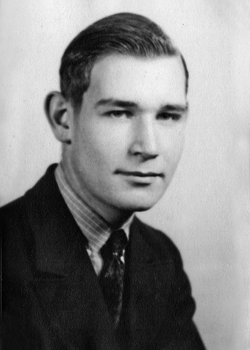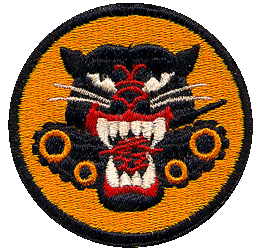 George F. Deimel
George F. Deimel
Biography: George Furman Deimel was born on January 13, 1920, in Huntington, Long Island, New York. He was the son of George Nicholas Deimel and Dorothy Handshaw Velsor. His father passed away less than a year after his birth and when his mother remarried, his care passed to his grandmother, Mary Emma Handshaw Velsor. George was only 15 when his grandmother passed away in 1935, so his care passed to his aunt, Mary Sidonia Velsor Suydam. He graduated from Huntington High School in 1938, and indications are that he took part in JROTC (Junior Reserve Officer Training) while still in high school. He was also was a member of the Boy Scouts and achieved the level of Eagle Scout. After graduating, he worked as a cook at the Superior Grill in South Huntingtown, NY.
Service Time: George entered the service on July 1, 1940, and after his basic training was assigned to the Headquarters Company, 1st Battalion of the 17th Field Artillery Brigade. He would eventually be assigned to the 813th Tank Destroyer Battalion and would have trained with them at facilities within the U.S. We know he was stationed with them at Ft. Bragg, North Carolina in April of 1942. At some point, he was reassigned to the 609th Tank Destroyer battalion, which had been activated at Ft. Bragg.
In January, 1943, the 609th moved to Camp Hood, Texas, for 3 months of additional training. From there it was on to Louisiana and Fort Polk for participation in the Louisiana maneuvers. They remained there for two months before moving to Camp Shelby, LA, where they trained for an additional 10 months. Their extended stay provided time to train on the new M-18 Tank Destroyers and a host of other new equipment. On June 28, 1944, they received notice for overseas deployment and moved by rail to Camp Shanks, New York, for final preparations. The 609th shipped out aboard the USS Hermitage on August 11th and arrived in Liverpool, England, on the 24th.
Several weeks later they boarded transports and landed at Utah Beach, France, on September, 20th. They were equipped with M18’s and initially went into Corps Reserve, on the 28th, east of Moutier, France, where crews fired artillery missions through October.
The unit then joined operations against the Siegfried Line in November and early December. Most of Company C moved to Bastogne, Belgium, on December 18th with the 10th Armored Division while the remainder of the battalion fought along the Sauer River. The entire battalion then fought to eliminate the Bulge in January, 1945. They were deployed to the Saar-Moselle triangle in February and participated in the capture of Trier in March. The 609th supported the attack south and east out of the Mannheim bridgehead across the Rhine River in late March and April, reaching southern Bavaria, near Füssen, by the end of the month. While in high school, George had learned German, which was very helpful to the unit when dealing with German civilians and captured German troops. The unit received credit for campaigns in Northern France, Rhineland, Ardennes-Alsace, and Central Europe. George was discharged on October 28, 1945, and was awarded the Good Conduct Medal.
After the war, George returned to New York and worked as a postal clerk in New York County as indicated by the 1950 census records. On November 15, 1955, he enlisted in the U.S. Navy and served during the Korean War. George’s nephew David, recalls stories of George being stationed in or around Alaska and having some interactions with Russian troops. He remained in the Navy until January 19, 1961, when he was discharged and again awarded the Good Conduct medal. He would have also been eligible for additional service awards, due to his almost eleven total years in the military. That same year, he moved to San Diego, California, and worked as a Supervisor for Western Radio and Television. George passed away on October 7, 1993, and was buried in the El Camino Memorial Park in San Diego, CA.
Thank you to George’s nephew, David Roberts, for preserving the main photo and memorabilia from his uncle and to David’s friend, Liz Halvosa, for working with me to create this tribute. Thank you also to Find A Grave contributor pLot Lzrd for the use of the grave marker photo.

